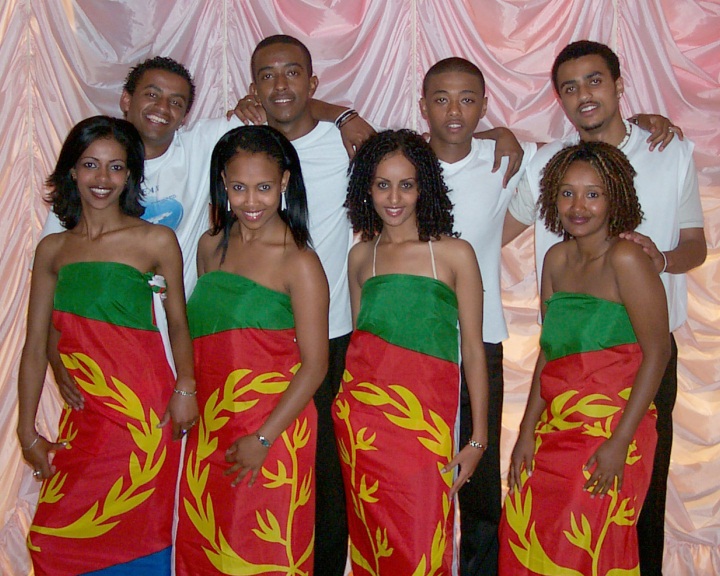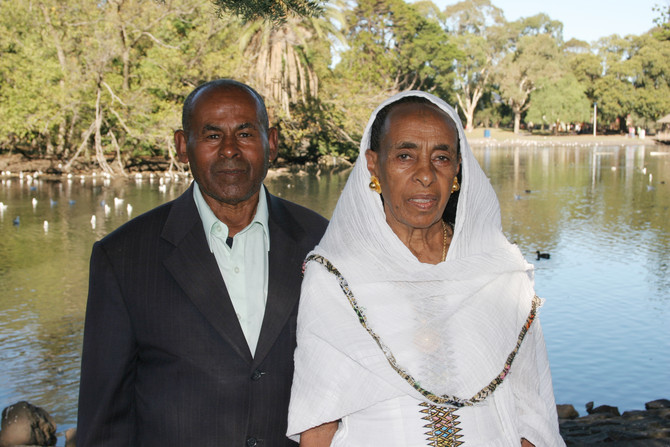Immigration History from Eritrea to Victoria
The Eritrean community is relatively new in Victoria. Eritrea-born Victorians were first recorded in the 1996 census at which time there were 745. By 2001 their number had grown to 998, representing a 40% increase.
Eritrea has a long history of foreign occupation; South Arabians, Ottoman Turks, the Portuguese, the Egyptians, the British and the Italians. Over the centuries, invaders also came from the neighbouring African countries of Ethiopia and Sudan.
Present-day large scale migration from Eritrea has its roots in years of fighting for independence from Ethiopia. During this time many Eritreans fled to refugee camps in surrounding countries. Since independence, in 1993, many have been repatriated but for others repatriation was not a viable option.
Since independence many Eritreans have come here under Family Reunion scheme, prompted by circumstance. Eritrea has been devastated by decades of war and the effects of continual drought, widespread presence of land mines and little arable land. In addition, economic instability and the threat of border conflict with Ethiopia mean that many Eritreans are continuing to flee their country.
The 2016 census recorded 2,004 Eritrea-born Victorians, an increase of 31% since 2016. The majority, 51%, speaks Arabic at home and 33% speaks Tigrinya; smaller numbers speak Tigre and English. The vast majority, 65%, is Muslim, 17% identify as Eastern Orthodox and 6% are Catholic.
The Eritrea-born community is young, with 65% under the age of 45. Of those employed, 35% are employed in the clerical, sales and service field, 19% fulfil managerial, professional and associated roles and 20% are employed as production and transport workers,. 13% live in the local government area of Melbourne , 13% live in Moonee Valley, and a similar number live in the Brimbank area.
The community is supported by the Victorian Eritrean Community Association and the National Eritrean Communities Council. An Eritrean Festival is held in Melbourne each January. The community accesses information from Eritrea via free international cable EreTV.
Immigration History from Eritrea (Arabic) to Victoria
الجالية الارتيرية حديثة العهد نوعاً ما في فيكتوريا. وقد تمّ تسجيل أولى الولادات الارتيرية في فيكتوريا في إحصاء عام 1996 وكان العدد آنذاك 745 شخصاً. وبحلول عام 2001 إرتفع العدد إلى 998 شخصاً مما يمثل زيادة بنسبة 40%.
عانت ارتيريا من تاريخ طويل من الاحتلال الأجنبي، من عرب الجنوب، والأتراك العثمانيين، والبرتغاليين، والمصريين، والبريطانيين، والإيطاليين. وقدم الغزاة على مدى العصور من الدول الافريقية المجاورة لاثيوبيا والسودان.
وفي الوقت الراهن، فإن أسباب هجرة الأعداد الكبيرة من ارتيريا تعود إلى سنوات من الكفاح لنيل الاستقلال عن أثيوبيا. وخلال نلك الفترة، فرّ العديد من الارتيريين الى معسكرات اللجوء في الدول المجاورة. ومنذ الاستقلال في عام 1993، عاد العديد من اللاجئين الى بلدهم غير أن العودة بالنسبة للبعض الآخر لم تكن خياراً قابلاً للتطبيق.
ومنذ الاستقلال وصل الى هنا العديد من الارتيريين بموجب برنامج جمع شكل الأسرة الذي فرضته الظروف. لقد تعرضت ارتيريا للدمار من جراء سنوات الحرب وتأثير الجفاف المتواصل، وانتشار حقول الألغام، وقلة الأراضي الصالحة للزراعة. كما أن عدم الاستقرار الاقتصادي، والتهديد بصراع حدودي مع اثيوبيا كان يعني للعديد من الارتيريين استمرار الفرار من بلدهم.
سجل تعداد عام 2011 ميلاد 1.520 إريترياً في فيكتوريا، بزيادة قدرها 25٪ منذ عام 2006. تتحدث الأغلبية - التي تمثل 51٪ - اللغة العربية في المنازل، ويتحدث 33٪ اللغة التغرينية، وتتحدث نسب بسيطة التيجرية والإنجليزية. يمثل المسلمون الغالبية العظمى بنسبة 65٪، ويمثل الأرثوذكس الشرقيون نسبة 17٪، ويمثل الكاثوليكيون نسبة 6٪.
تقوم الجالية الإريترية على الشباب، حيث يقع 65٪ منهم تحت سن ال 45. فيما يتعلق بالعمالة، يعمل 35٪ بالأعمال الكتابية والمبيعات والخدمات، ويؤدي 19٪ الأعمال الإدارية والمهنية والأدوار المرتبطة بها، ويعمل 20٪ كعمال في الإنتاج والنقل. يسكن 13٪ في منطقة الحكومة المحلية ملبورن، ويسكن 13٪ في موني فالي، وتسكن نسبة مماثلة في منطقة بريمبانك.
وتحصل الجالية الارتيرية على الدعم من الجمعية الارتيرية في فيكتوريا، والمجلس الوطني للجاليات الارتيرية. وهناك مهرجان أرتيري يقام في ملبورن سنوياً في شهر كانون الثاني/يناير. وتحصل الجالية الارتيرية على المعلومات من ارتيريا عبر قناة EreTV الفضائية المجانية.



